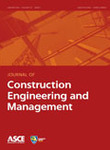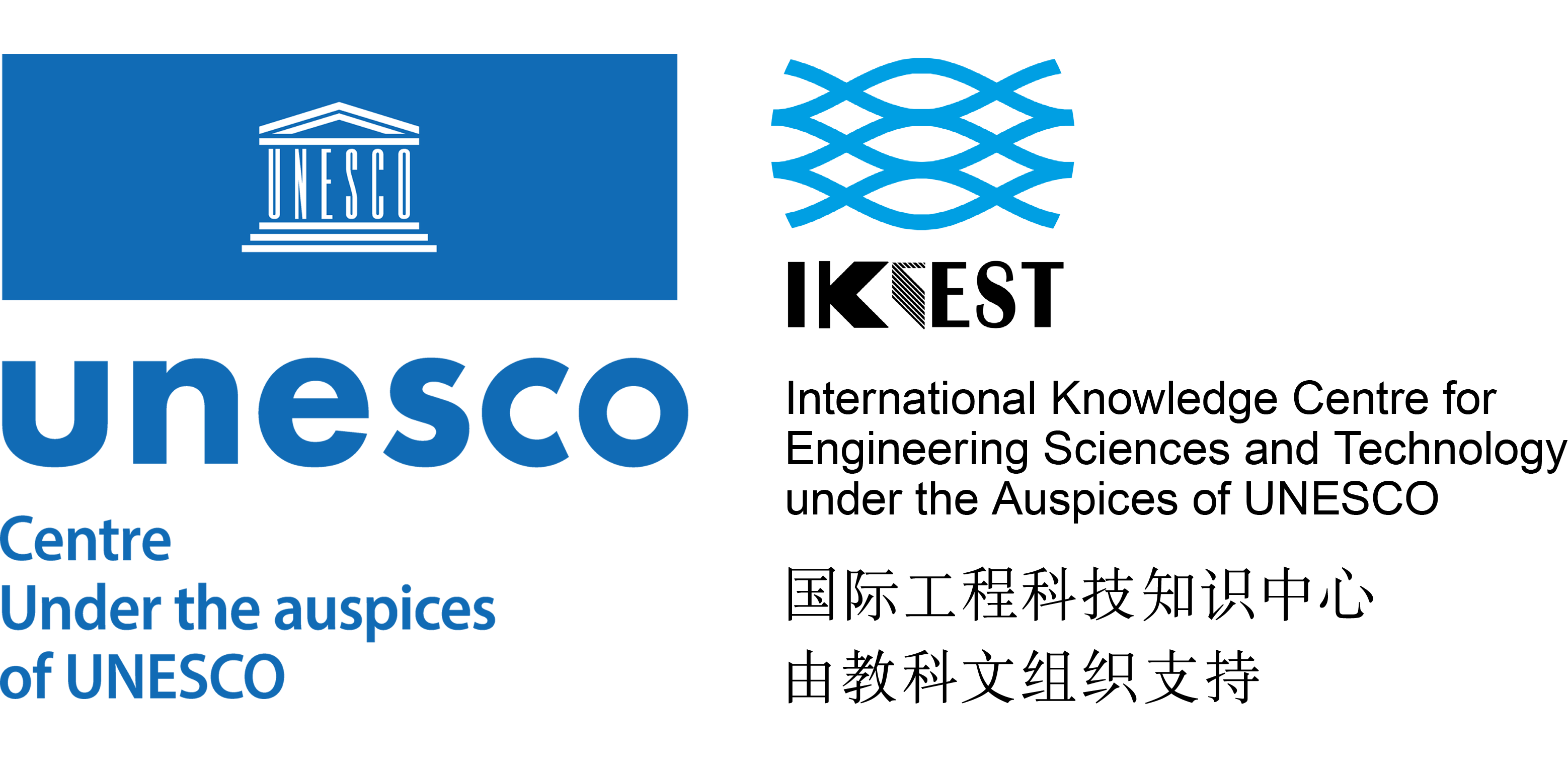Journal


Journal of Construction Engineering and Management
Archives Papers: 372
The American Society of Civil Engineers
Please choose volume & issue:
-
Probabilistic Modeling Framework for Prediction of Seismic Retrofit Cost of Buildings
Abstracts:This study presents a framework that utilizes Bayesian regression to create probabilistic cost models for retrofit actions. Performance improvement is the key parameter introduced in the proposed framework. The incorporation of this novel feature facilitates the characterization of retrofit cost as a continuous function of the desired performance improvement. Accounting for the performance gained from retrofit enables the use of the models in determining the optimal level of retrofit. Furthermore, accounting for the model uncertainty facilitates the use of the models in risk and reliability analyses. The proposed framework is applied to create seismic retrofit cost models for masonry school buildings in Iran. A cost database of 167 masonry retrofit projects was compiled and used to create cost models for three retrofit actions, namely, Shotcrete, fiber-reinforced polymer, and steel belt. The proposed framework identifies the most influential variables that govern building retrofit cost. Practitioners can use the proposed framework to create cost models for various retrofit actions to decide whether to retrofit a building and to identify the least costly retrofit action.
-
Interaction of Lean and Building Information Modeling in Construction
Abstracts:Lean construction and building information modeling (BIM) are quite different initiatives, but both are having profound impacts on the construction industry. A rigorous analysis of the myriad specific interactions between them indicates that a synergy exists which, if properly understood in theoretical terms, can be exploited to improve construction processes beyond the degree to which it might be improved by application of either of these paradigms independently. Using a matrix that juxtaposes BIM functionalities with prescriptive lean construction principles, 56 interactions have been identified, all but four of which represent constructive interaction. Although evidence for the majority of these has been found, the matrix is not considered complete but rather a framework for research to explore the degree of validity of the interactions. Construction executives, managers, designers, and developers of information technology systems for construction can also benefit from the framework as an aid to recognizing the potential synergies when planning their lean and BIM adoption strategies.
-
Models of Construction Innovation
Abstracts:Construction innovation offers the potential for significant company, industry, and societal benefits. The objective of this paper is to present five models of construction innovation, which can provide a basis upon which companies can select and implement the innovations. Based upon current management and economic theories of innovations, the models reflect the unique conditions of constructed facilities, including the scale, complexity, and longevity of the facilities, as well as their organizational and social contexts. The innovations are differentiated by their degree of change from current practice, and their links to other components and systems. The five models are incremental, modular, architectural, system, and radical innovations. Using this categorization of innovations, companies can plan their implementation activities with respect to timing of commitment, coordination among the project team, special resources, and level of supervisory activity. Examples of construction innovations in each category are discussed.
-
Supervisor-Focused Behavior-Based Safety Method for the Construction Industry: Case Study in Hong Kong
Abstracts:Behavior-based safety (BBS) methods have been widely reported as an important contributor to the prevention of accidents and improvement of safety performance in construction projects. However, most existing BBS methods fail to look into the impact of the interactions between workers and their supervisors. To overcome this limitation, the impact of supervisor behaviors on safety climate and workers’ behavioral performance is examined in this study. A supervisor-focused BBS method is proposed accordingly, which takes group-level safety climate as a mediator to encourage the supervisor behaviors to improve the workers’ behavioral performance of construction projects. A case study was carried out in a construction project in Hong Kong. The statistical analysis proved that the intervention with supervisor behaviors resulted in significant improvement in the safety climate, the workers’ behavioral safety performance, and the sustainability of the BBS impacts. The results demonstrated that focusing on supervisor behaviors is a viable approach for ameliorating the effectiveness and sustainability of BBS in improving the safety performance in the construction industry.
-
Preliminary Contractual Framework for BIM-Enabled Projects
Abstracts:Building information modeling (BIM) has entered into another phase of maturity, especially in countries that have been actively adopting and using BIM including in Taiwan, Republic of China. An effective management in BIM has increasingly become one of the demanding features in Taiwanese architecture, engineering, construction, and operation industries, particularly in dealing with the legal issues associated with BIM implementation. Therefore, the research aims to develop a preliminary contractual framework for BIM-based contract administration. Two objectives underpin the research, namely, (1) to identify the potential legal aspects that need to be considered in BIM-enabled projects, and (2) to determine the related contract provisions required in BIM contracts. The questionnaire survey method was adopted through a selective sampling approach in Taiwan. Thirty-six valid and completed questionnaires were analyzed. The results identify 21 related contract provisions that could potentially be used in BIM contracts. Following a thorough analytical discussion, these contract provisions were then incorporated into the developed contractual framework. While paving the way for a robust contractual mechanism for BIM-enabled projects in the future, the research contributes to the body of knowledge for BIM-based contract administration.
-
Strategies Employed and Lessons Learned by Commercial Construction Companies during Economic Recession and Recovery
Abstracts:The purpose of this research was to identify strategies used and lessons learned by western U.S. commercial construction companies during the great recession (2007–2009). The experience gained by companies who weather an economic downturn must be absorbed into the corporate structure in a meaningful way if that knowledge is to be accessible for future recessions. This study focused on identifying and better understanding the specific approaches that commercial construction companies employed to weather the great recession and the corresponding lessons learned. A stratified purposeful sampling survey was conducted across 15 different commercial construction companies and included 57 participants in various management roles. This paper provides a comprehensive list of 124 different strategies or lessons learned across six principal categories: (1) contracting, (2) risk management, (3) cost-control, (4) human resources, (5) financial, and (6) investment related responses. This paper also provides recommendations for commercial construction companies to consider during various economic cycles on the basis of the lessons learned during this recession and recovery.
-
Psychological Contracts: Framework for Relationships in Construction Procurement
Abstracts:The existence of psychological contracts (PC) in construction procurement is examined. Specific objectives are to identify the presence of the PC in construction project teams and catalogue its effect on procurement delivery. A survey instrument designed with the assistance of two focus groups and subsequently administered to a purposive sample of experienced construction/engineering managers identified unique attributes of significance. Two further focus groups helped develop a conceptual model of PC for construction of a more generalizable nature. Findings suggest PCs are present in construction delivery teams. Antecedent enabling factors, referred to as relational conditions and benefits that form unwritten agreements and unwritten contracting behaviors, are found, which consequently affect team satisfaction. For the professional, advances in knowledge are identified in the new model where factors of trust, commitment, and good faith and fair dealing are described as components of the PC in construction. Revealing these less tangible characteristics of construction management in the PC serves to provide the professional with a novel framework from which to anchor their understanding of procurement teams and enhance their decision-making capability.
-
Optimizing Crane Selection and Location for Multistage Construction Using a Four-Dimensional Set Cover Approach
Abstracts:Crane selection and location planning exists as part of a series of critical decisions faced by construction managers. As today’s construction projects grow increasingly complex and complicated construction schemes involving multistaged construction layouts become more common, the problem of crane selection and location planning becomes even more critical to achieving successful project completion. Despite this, current methods do not consider the impact of multiple stages. This paper first shows that neglecting the impact of multiple construction stages leads to suboptimal crane deployment costs. To overcome this, the problem of crane selection and location planning is recast as a four-dimensional set cover problem (4D-SCP). The proposed model is able to provide better solutions when multiple stages are considered, as well as providing a tool to analyze construction methods and work sequences from the perspective of total crane deployment costs. A case study of an academic building with an adjoining workshop is used to demonstrate these advantages.
-
Risks in PPP Water Projects in China: Perspective of Local Governments
Abstracts:In the last decade, China has implemented more public–private partnership (PPP) projects in the water sector compared to other sectors. However, efficient management of risks in these projects remains problematic. While there have been many studies that have examined risks associated with PPPs in China, the experience of local governments with risks has received little or no attention in the literature. Moreover, the stages at which the risks are significant and how these risks are interrelated have not been researched. This paper examines risks as experienced from the local government’s perspective and how they manifest across five PPP stages: (1) feasibility, (2) procurement, (3) construction, (4) operation, and (5) transfer. The interrelationship between the risks across the PPP stages is also examined. Data was collected via questionnaire surveys and interviews, and it was analyzed using quantitative and qualitative analysis. The findings reveal critical risk for local governments and how their impacts vary across project stages. Some of the risks influence other risks both within and across the five PPP stages. The findings provide significant insight into the dynamic nature risks in PPP water projects, which has important implications for practitioners when developing risk mitigation strategies.
-
AHP-ANP–Fuzzy Integral Integrated Network for Evaluating Performance of Innovative Business Models for Sustainable Building
Abstracts:Sustainable building (SB) has emerged as an innovative approach to minimizing the resource consumption of buildings. To promote the market uptake of SB, innovative business models (BMs) are needed. However, the adoption of innovative BMs for SB is inhibited by the lack of consistent evaluation of SB’s business value and structured selection of appropriate BMs. This paper aims to develop a novel model for evaluating the performance of innovative BMs for SB, and assist SB stakeholders in selecting the most appropriate BM and accelerating the delivery of SB. The research was carried out with the performance evaluation of innovative BMs for SB drawn on academic research and practices internationally. Eight key performance criteria and 33 indicators of BMs for SB were identified through a literature review and a questionnaire survey with 31 stakeholders. The interdependencies among the criteria were also examined through a focus group meeting, which, together with the weights of the criteria, were quantified through six expert interviews with representative stakeholders using integrated analytic hierarchy process (AHP) and analytical network process (ANP) methods. After that, the impacts of the interdependencies on the weights and ultimately on the derived final evaluation scores of BM alternatives were modeled using the nonadditive fuzzy integral method as the information aggregation operator. Four innovative BM alternatives for SB originally developed from real-life international cases from Australia, Singapore, Japan, and the United Kingdom were selected for evaluation using the developed model. The results showed that extended operation and maintenance service was the optimal innovative BM type for developers to deliver SB among the alternatives. This research contributes to a better understanding of BM innovations for SB, and the developed AHP-ANP–fuzzy integral integrated network provides stakeholders a consolidated model for the synthetic evaluation of innovative BMs for SB.
Hot Journals
- Risk Breakdown Matrix for Risk-Based Inspection of Transportation Infrastructure Projects
- Social Control in Outsourced Architectural and Engineering Design Consulting Projects: Behavioral Consequences and Motivational Mechanism
- 2022 Best Paper Award
- Hold-Ups and Failures in Negotiated Order: Unearthing the Nuances of Rework Causation in Construction
- Prevalence and Risk Factors for Poor Mental Health and Suicidal Ideation in the Nigerian Construction Industry
- CFRP–Cable-Stayed Bridge Hybrid with Partial Suspension and a Span Exceeding 3,000 m: Concept, Optimization, and Construction
- Impact of Wind Load Characteristics on Computed Bridge Stay-Cable Forces Used for Bridge Health Monitoring
- Weak-End and Frequency Detection of Elastically Supported Bridges by Contact Residual Response of Two-Axle Test Vehicle in a Round Trip
- Development of Performance-Based Fragility Curves of Coastal Bridges Subjected to Extreme Wave-Induced Loads
- An Analytical Model to Evaluate Short- and Long-Term Performances of Post-Tensioned Concrete Box-Girder Bridges Rehabilitated by an Ultrahigh-Performance Concrete Overlay
- Three-Dimensional Velocity Distribution in Straight Smooth Channels Modeled by Modified Log-Law
- Experimental Investigation on Flow Past Two and Three Side-by-Side Inclined Cylinders
- An Experimental Investigation of Rotor–Box Aerodynamic Interaction 1
- Modeling Gas–Liquid Flow Between Rotating and Nonrotating Annular Disks
- Entry Length Requirements for Two- and Three-Dimensional Laminar Couette–Poiseuille Flows
Advanced Materials (3,745)
- Structured Perovskite Light Absorbers for Efficient and Stable Photovoltaics
- Strategies for High‐Performance Solid‐State Triplet–Triplet‐Annihilation‐Based Photon Upconversion
- Atomic Engineering Catalyzed MnO2 Electrolysis Kinetics for a Hybrid Aqueous Battery with High Power and Energy Density
- Crystal Adaptronics: Global Performance Indices for Dynamic Crystals as Organic Thermal Actuators (Adv. Mater. 20/2020)
- Enlightening Materials with Photoswitches
Acta Astronautica (1,768)
- Mixed-integer trajectory optimization with no-fly zone constraints for a hypersonic vehicle
- Adaptive control design for active Pogo suppression of large strap-on liquid launch vehicles
- Machine learning based approach for modeling and forecasting of GPS–TEC during diverse solar phase periods
- Effect of two-dimensional micro-cavity surface on hypersonic boundary layer
- Investigation on burning behaviors of aluminum agglomerates in solid rocket motor with detailed combustion model








 User Center
User Center My Training Class
My Training Class Feedback
Feedback




